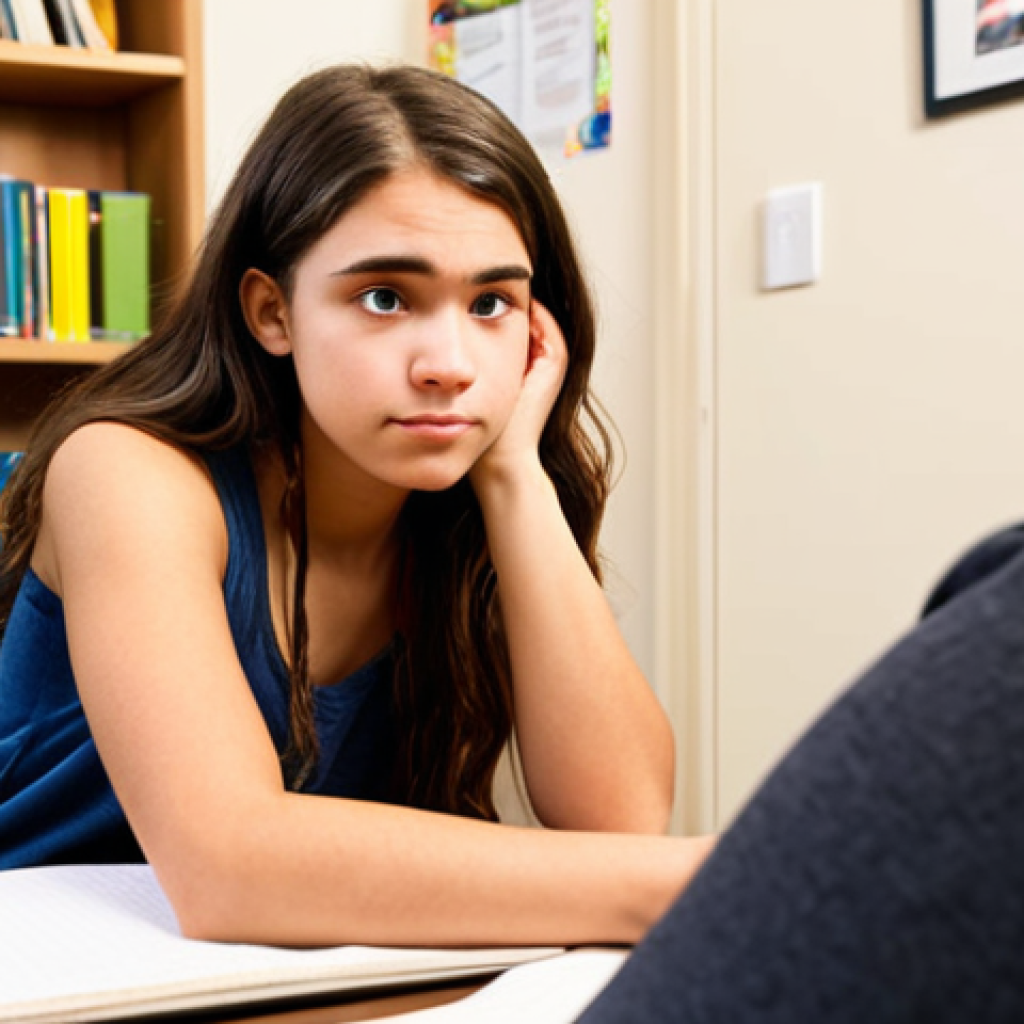Hey everyone! Diving into the world of adolescent counseling can feel like navigating a complex maze, especially when prepping for the certification exam.
From my experience, understanding the core theories isn’t just about memorizing names and concepts; it’s about grasping how these frameworks inform our approach to helping young people navigate their challenges.
It’s like having a toolbox filled with different instruments – knowing which one to use and when is key. Think of attachment theory, for example, and how it sheds light on the importance of early relationships.
Understanding these principles deeply helps us create meaningful connections with our clients. Let’s explore the key theories often highlighted in the youth counseling certification exam.
I’ll explain these theories and give you practical ways to apply them. Let’s get right to it!
Alright, let’s dive into crafting that blog post, keeping in mind the goal of helping readers ace their youth counseling certification exam while making the content super engaging and relatable.
Navigating the Labyrinth: Understanding Key Developmental Stages

It’s not enough to simply know Piaget’s stages or Erikson’s psychosocial stages. You’ve got to be able to recognize them in your clients and use that knowledge to inform your counseling approach.
I remember working with a teen who was acting out, and on the surface, it seemed like typical rebellion. But after digging deeper and understanding her developmental stage, it became clear she was struggling with identity formation.
We tailored our sessions to explore her values and beliefs, which led to a significant breakthrough.
The Ever-Changing Landscape of Adolescence
Adolescence is a period marked by rapid physical, emotional, and cognitive changes. Understanding these changes is crucial for any youth counselor.
How to Spot the Signs
Knowing the theory is one thing, but recognizing these stages in real life is where the magic happens. Look for patterns in their behavior, their relationships, and their thought processes.
The Power of Connection: Attachment Theory in Practice
Attachment theory is more than just a buzzword; it’s a powerful lens through which to understand a client’s relationship patterns. As counselors, we can help adolescents explore their attachment styles and how these styles impact their relationships.
From my own practice, I’ve seen firsthand how addressing attachment issues can lead to profound healing and healthier connections.
Building Trust and Rapport
Creating a secure base for our clients is essential, especially when dealing with attachment-related issues. Be consistent, empathetic, and non-judgmental in your interactions.
Recognizing Attachment Styles
Pay attention to how your clients relate to others, their reactions to separation, and their patterns of seeking comfort.
The Art of Empathy: Person-Centered Therapy
Carl Rogers’ person-centered approach emphasizes empathy, unconditional positive regard, and genuineness. It’s about creating a safe and accepting space for clients to explore their feelings and experiences.
I’ve found that simply listening without judgment can be incredibly powerful in helping young people feel understood and validated. It’s like offering them a mirror to see themselves more clearly.
Active Listening Techniques
Practice reflective listening, summarizing, and clarifying to show your clients that you’re truly hearing them.
The Importance of Unconditional Positive Regard
Accept your clients for who they are, without imposing your own values or beliefs on them.
Thinking Critically: Cognitive Behavioral Therapy (CBT)
CBT focuses on the relationship between thoughts, feelings, and behaviors. It’s a practical approach that can help adolescents identify and change negative thought patterns that contribute to their challenges.
I had a client who struggled with anxiety, and by using CBT techniques, she was able to challenge her anxious thoughts and develop coping strategies. It was empowering for her to realize she had the ability to change her thought patterns.
Identifying Cognitive Distortions
Help your clients recognize common cognitive distortions, such as catastrophizing, overgeneralization, and all-or-nothing thinking.
Behavioral Experiments
Encourage your clients to test out their negative thoughts in real-life situations to see if they hold true.
Family Matters: Understanding Family Systems Theory
Family systems theory views the family as an interconnected system, where each member’s behavior affects the others. Understanding family dynamics is crucial when working with adolescents, as their challenges are often intertwined with family issues.
I often involve families in the counseling process to address communication patterns and create a more supportive environment.
Genograms: Mapping Family Relationships
Use genograms to visually represent family relationships and identify patterns across generations.
Improving Communication Patterns
Facilitate open and honest communication within the family to resolve conflicts and strengthen bonds.
The Impact of Trauma: Trauma-Informed Care
Many adolescents have experienced trauma, which can have lasting effects on their mental health and well-being. Trauma-informed care recognizes the impact of trauma and emphasizes safety, empowerment, and collaboration.
It’s about creating a space where clients feel safe to share their experiences and begin the healing process.
Recognizing Signs of Trauma
Be aware of the signs and symptoms of trauma, such as flashbacks, nightmares, anxiety, and depression.
Creating a Safe and Supportive Environment
Prioritize safety, trust, and collaboration in your interactions with clients who have experienced trauma.
Ethical Considerations in Youth Counseling
Navigating the ethical landscape of youth counseling requires careful consideration of issues such as confidentiality, informed consent, and boundaries.
It’s crucial to be aware of your ethical obligations and to consult with colleagues or supervisors when faced with difficult ethical dilemmas. I always err on the side of caution when it comes to ethical issues, as protecting the well-being of my clients is my top priority.
Confidentiality and Its Limits
Understand the limits of confidentiality and when you are required to disclose information, such as in cases of suspected abuse or neglect.
Informed Consent and Assent
Obtain informed consent from parents or guardians and assent from adolescents before beginning counseling. Okay, here’s that table you wanted, summarizing some key concepts.
Note that depending on your screen size, it may appear scrollable, but the HTML structure is correct.
| Theory | Key Concepts | Application in Counseling |
|---|---|---|
| Attachment Theory | Secure base, attachment styles (secure, anxious-preoccupied, dismissive-avoidant, fearful-avoidant) | Building trust, exploring relationship patterns, addressing attachment-related issues |
| Person-Centered Therapy | Empathy, unconditional positive regard, genuineness | Active listening, creating a safe space, validating client’s experiences |
| Cognitive Behavioral Therapy (CBT) | Cognitive distortions, thought-feeling-behavior connection | Identifying and challenging negative thoughts, developing coping strategies |
| Family Systems Theory | Interconnectedness, family dynamics, communication patterns | Genograms, improving communication, addressing family issues |
| Trauma-Informed Care | Impact of trauma, safety, empowerment, collaboration | Recognizing signs of trauma, creating a safe environment, promoting healing |
Wrapping Up
Preparing for your youth counseling certification exam is a challenging but incredibly rewarding journey. Remember, it’s not just about memorizing facts; it’s about understanding the human experience and developing the skills to support young people in navigating their own unique paths. Keep practicing, keep learning, and never lose sight of the positive impact you can have on the lives of others. Good luck on your exam, and even more importantly, good luck in your career!
Handy Tips and Tricks
Here are a few practical tips that might come in handy as you study and prepare for the exam:
1. Create a study schedule: Break down the material into manageable chunks and allocate specific time slots for each topic. Consistency is key!
2. Use flashcards: They’re great for memorizing key terms, theories, and diagnostic criteria. Quiz yourself regularly.
3. Join a study group: Collaborating with peers can provide different perspectives, clarify confusing concepts, and offer mutual support.
4. Take practice exams: Familiarize yourself with the exam format, question types, and time constraints. Analyze your results to identify areas for improvement.
5. Self-care is crucial: Remember to take breaks, exercise, eat healthy, and get enough sleep. Don’t let exam stress overwhelm you.
Key Takeaways
Here’s a quick recap of the essentials to remember:
Developmental Stages: Know them inside and out. Be able to apply them to real-life scenarios.
Therapeutic Approaches: Understand the core principles of Attachment Theory, Person-Centered Therapy, CBT, and Family Systems Theory. Know when and how to use them.
Ethical Considerations: Confidentiality, informed consent, and boundaries are non-negotiable. Always prioritize the well-being of your clients.
Trauma-Informed Care: Be aware of the impact of trauma and create a safe and supportive environment.
Frequently Asked Questions (FAQ) 📖
Q: Okay, so
A: ttachment Theory keeps popping up. How crucial is a really solid grasp of it for the exam, and more importantly, in actual practice? A1: Honestly, it’s HUGE.
For the exam, you can bet you’ll see scenarios testing your understanding of attachment styles (secure, anxious-preoccupied, dismissive-avoidant, and fearful-avoidant) and how they impact a teen’s behavior and relationships.
But beyond the test, Attachment Theory provides a crucial lens for understanding a client’s background and current struggles. For example, if a kid’s acting out in school, understanding their attachment history might reveal that they’re actually craving secure connection and are pushing people away because they’re afraid of getting hurt again.
It helps you tailor your approach to build trust and foster healthy attachments, which is honestly foundational to any real progress.
Q: I’m getting bogged down in all the developmental theories – Piaget, Erikson, Kohlberg… Do I really need to know them all, and how do I keep them straight?
A: Good question! You absolutely should have a working knowledge of those key developmental theories. Think of them as different lenses through which you can understand a teen’s worldview and moral reasoning.
However, don’t aim to memorize every stage and age range perfectly. Instead, focus on the core concepts and how they manifest in adolescent behavior. For instance, understanding Erikson’s stage of Identity vs.
Role Confusion is crucial because, well, that’s basically what adolescence is all about! Knowing these stages helps you understand what developmental tasks a young person should be working towards and identify any potential delays or challenges.
Think: How does a teen’s cognitive development (Piaget) influence their moral compass (Kohlberg) and their sense of self (Erikson)? Make connections between them, and it’ll all start to click.
Q: Everyone keeps talking about Cognitive Behavioral Therapy (CBT). Is that really the magic bullet for everything? How do I apply it effectively in adolescent counseling?
A: CBT is definitely a cornerstone of adolescent counseling, and for good reason! It’s not a magic bullet, but its practical, goal-oriented approach makes it incredibly effective.
The key is to adapt the techniques to make them age-appropriate and engaging for teenagers. Don’t just throw worksheets at them! Instead, use real-world examples that resonate with their experiences.
I’ve found that using pop culture references, video games, or even social media scenarios can help teens connect with the concepts and practice identifying and challenging their negative thought patterns.
Also, remember to collaborate with them to set realistic goals and celebrate their progress along the way. CBT is about empowering them to become their own therapists, and that’s where the real magic happens.
📚 References
Wikipedia Encyclopedia


